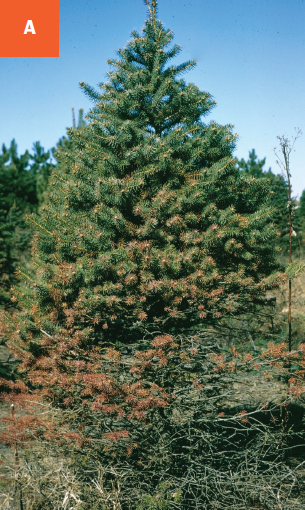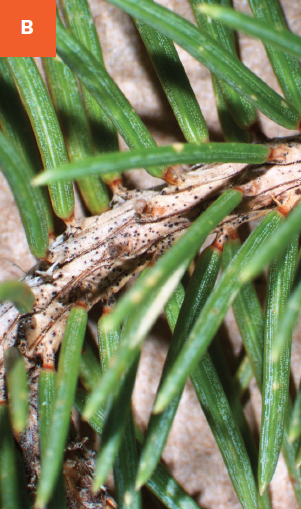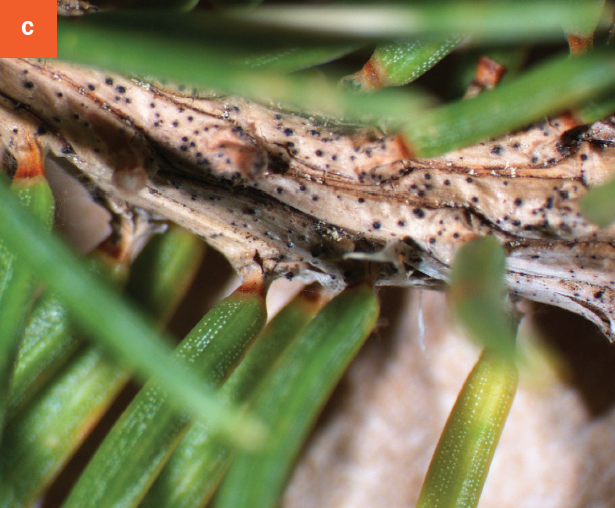Sudden Needle Drop
Setomelanomma holmii (fungus)
HOST Colorado blue spruce, white spruce, Norway spruce
DAMAGE/SYMPTOMS Older needles turn yellow and/or brown and are shed by fall. Only newest needles may stay green at the tip of branches. Affected branches may be scattered throughout the tree. The canopy of affected trees may thin out over time.
DISEASE CYCLE This problem only affects stressed trees. The fungus overwinters in infected branches. Small, black fruiting bodies can be found on the branches, bud scales, and on the woody tissue at the base of needles but not on/in the needles. Since this is a relatively new problem, not many details are known about its life cycle.
MANAGEMENT Control measures applied to control Rhizosphaera needle cast disease appear to manage sudden needle drop as well. Provide good spacing between trees to optimize air circulation. Re-direct sprinklers to avoid hitting the tree canopy during irrigation. Affected trees can be treated with a fungicide containing the active ingredient copper or chlorothalonil. Apply fungicides in spring when new needles have grown half their mature length. A second treatment should be applied three to four weeks later when new needles are full grown. Strictly follow instructions on the pesticide labels.
A Spruce tree affected by needle cast disease. B Dark fruiting bodies emerge on branches. C Close-up of fruiting bodies.



